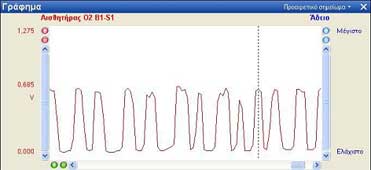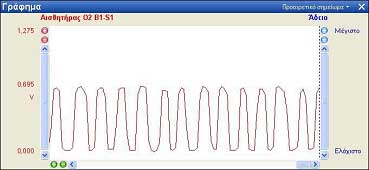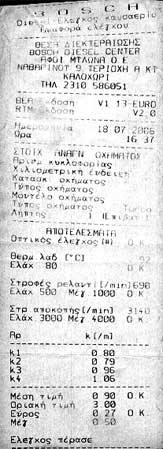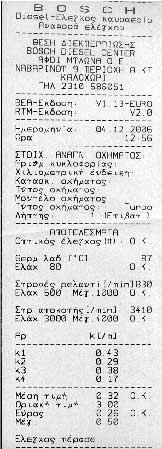RESULT CERTIFICATION OF THE FMO® DEVICES
Before installation
Connect your diagnostic kit (car engineer) with Lambda oxygen sensor of the vehicle before installing an FMO® gasoline device and note some measurements such as:
- How many corrections (pulses) in constant time (sec ή min) the engine does.
- Percentage + / - (%) in fuel correction.
- Waveform type.
- RMP.
- mA or mV scale (In mA η mV scale, at idle speed rise the engine speed (rpm) and let it slow down. Repeate it 3 times by rise to different RPM every time. Make notes such as: a) The RPM b) the range of the mA η mV scale that the lambda sensor used to correct fuel)

After installing FMO® gasoline device
Install the FMO® gasoline device at your vehicle and start the engine.
After 10 minutes connect your diagnostic device and check again with the same procedure..

Results
Comparing the 2 measurements we see that:
Without the FMO® device the corrections (pulses) of the lambda sensor are not the same at all 3 measurements but varies from 28 to 32. Also the correction percentage varies from 92% (lean fuel) to 107% (rich fuel). In mA scale as we raise different RPMs the lambda sensor used all mV or mA range in its corrections.(From 200 mV to 700 mV)
In every RPM increasing you can see the same range in mV or mA scale. (Different volts depending on the brand and type of sensor).
This way is documented that after installing a device FMO® something is changing in engine combustion.
It changes the molecular composition of sprayed droplets of fuel in the cylinders of the engine. (intake fuel)
This results: the same amount of fuel droplets burned in the time of the explosion within cylinders producing the same work from each cylinder of the engine. (Torque)
In exhaust timing the exhaust oxygen is the same in each cylinder. When all this reaches the lambda sensor, the sensor sends 50% less pulses to the vehicle computer that corrects injected fuel less times
K (smoke) exhaust measurements in a FORD Connect 1.8 TDCI/06
Without FMO®
diesel device
(Four Measurements)

Κ1 0,80
Κ2 0,79
Κ3 0,96
Κ4 1.06
- Average 0,90
-----------
With FMO®
diesel device
(Four Measurements)

Κ1 0,80
Κ2 0,79
Κ3 0,96
Κ4 1.06
- Average 0,32
-----------


